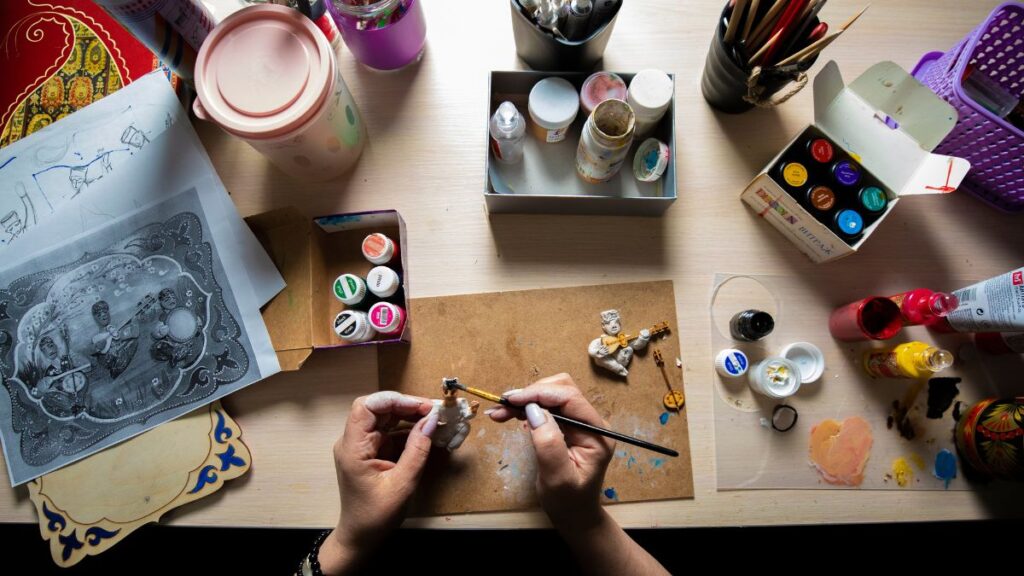Introduction to Tūbės: What are they and where do they come from?
Tūbės are not just instruments; they are a vibrant expression of culture, history, and artistry. Originating from diverse regions around the globe, these unique creations encapsulate stories and traditions passed down through generations. Each Tūbė carries with it the essence of its maker’s heritage, inviting musicians and artisans alike to explore their roots while crafting something truly special. Whether you’re drawn to their melodic potential or the intricate craftsmanship involved in making them, understanding Tūbės offers an enriching journey into art form that transcends time and place. Let’s delve deeper into what makes Tūbės so fascinating!
The History and Significance of Tūbės in Various Cultures
Tūbės have a rich history that spans continents and cultures. Originating in ancient traditions, these instruments were often crafted from natural materials like wood or metal. Each culture infused its unique characteristics into the design, resulting in diverse styles.
In many Indigenous communities, Tūbės served as symbols of identity and connection to heritage. They played crucial roles in rituals, celebrations, and storytelling. The sounds produced were believed to carry messages between worlds.
Across different regions, Tūbės evolved with technology while retaining their cultural essence. From ceremonial uses to modern music scenes, they adapt without losing significance.
Even today, many regard them as an art form reflecting craftsmanship and creativity. The stories etched into each piece create a tapestry of human experience that transcends time and geography.
Tools and Materials Needed for Crafting Tūbės
Crafting Tūbės requires a selection of specific tools and materials that will help achieve the desired sound and aesthetic. Begin with high-quality wood, as it forms the body of the Tūbė. Maple and cherry are popular choices due to their resonance.
Next, gather hand tools like chisels, files, and sandpaper for shaping. A saw is essential for cutting your wood to size.
For precision work, consider using calipers or rulers to ensure accurate measurements throughout the process.
Don’t overlook finishing materials such as oils or varnishes. These enhance both appearance and durability.
A reliable drill is crucial for creating holes that allow sound waves to resonate properly within your creation. Each tool plays its part in transforming raw materials into beautiful musical instruments that carry cultural significance.
Step-by-Step Guide to Crafting a Traditional Tūbė
Start by gathering your materials. You’ll need a sturdy piece of wood, preferably from a local tree. Maple or cherry works well for traditional Tūbės.
Next, sketch the design on paper. Visualize how you want your Tūbė to look. This process helps in planning out the carving and shaping.
Once you have a clear idea, carefully transfer the design onto the wood. Use a pencil for precision; this will be your guide during carving.
With your tools ready, begin carving out the basic shape of the Tūbė using chisels and knives. Work slowly and steadily to avoid any mistakes that could ruin your progress.
As you carve deeper into the wood, pay attention to details like grooves or decorative elements that make each piece unique. Sand down rough edges for a smooth finish later on.
Apply natural oils or stains if desired to enhance color while protecting the wood’s integrity over time.
Modern Adaptations and Techniques for Creating Unique Tūbė Designs
Modern artisans are breathing new life into traditional Tūbės. They blend ancient methods with contemporary aesthetics, creating pieces that resonate with today’s audience.
Innovative materials play a significant role in this evolution. Instead of the classic wood, some craftspeople experiment with metals and resins. This shift opens up a world of color and texture previously unseen in traditional designs.
Techniques have also evolved. Digital tools now assist in design processes, allowing for precise detailing that was once painstakingly manual. Laser engraving, for example, enables intricate patterns to adorn each Tūbė effortlessly.
Additionally, workshops around the globe foster collaboration among diverse creators. This exchange of ideas sparks fresh approaches while honoring age-old traditions. From urban street art influences to minimalistic Scandinavian styles, unique interpretations emerge.
The fusion of tradition and modernity creates captivating results that speak to both heritage and innovation.
The Cultural Importance of Passing Down Tūbės
The legacy of Tūbės extends far beyond their physical form. These instruments are vessels of culture, embodying the stories and traditions of those who create and play them. Passing down the art of crafting Tūbės is essential for preserving these rich histories.
When families teach their children how to make a Tūbė, they are sharing more than just skills; they are imparting identity and connection to their heritage. This practice fosters bonds between generations, creating a sense of continuity in an ever-changing world.
Moreover, as communities come together to celebrate this tradition, they strengthen social ties. Workshops and gatherings dedicated to crafting Tūbės can serve as cultural hubs where knowledge is exchanged freely. Such environments encourage innovation while respecting traditional techniques.
Embracing the craft means embracing its history too. As artists adapt modern tools or materials, they inject new life into age-old practices without losing sight of what makes Tūbės special. Each handmade piece tells a unique story shaped by its maker’s experiences and influences.
By nurturing these connections through teaching and storytelling, we ensure that future generations will not only know about Tūbės but also appreciate their profound significance within various cultures worldwide. The following generations stand ready to breathe fresh air into this ancient art form while honoring those who came before them with every note played on a lovingly crafted instrument.







